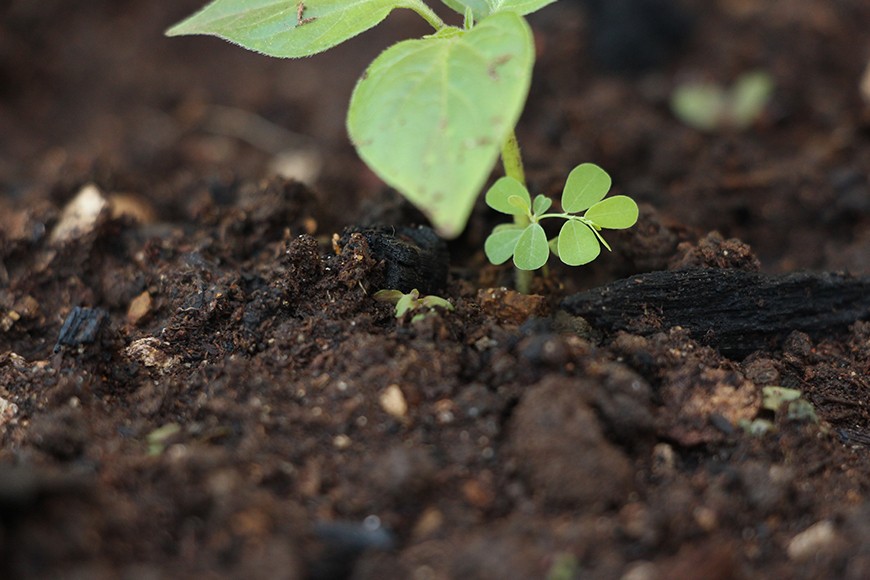What are trace elements?
 02 out.
02 out. Trace elements are elements in plant nutrients that ensure growth and enable certain functions. They form the building blocks of enzymes that facilitate essential processes in your plants. Important trace elements for plants include: boron, molybdenum, iron, zinc, manganese and magnesium. Trace elements are only needed in small amounts, too much can be harmful to the plant. We discuss a number of different types of trace elements in this article.
Boron
Boron helps with cell division, transport of carbohydrates and functioning of nutrients. A continuous supply of boron is important during the plant’s growth phase. If a plant contains too little boron, root development will deteriorate and growing points will die. The leaves look dehydrated and the plant bears less fruit. Too much boron is not good either. The leaf veins can become blocked or turn yellow. Some plant species are more susceptible to an excess of boron than others.
Molybdenum
This nutritional element promotes growth and nitrogen balance. Many enzymes cannot function without molybdenum. Molybdenum deficiency often manifests as a lack of nitrogen. Enzymes responsible for nitrogen balance function less effectively, as a result of which the nitrogen is insufficiently bound. That can cause leaves to curl or wilt. If the pH value is low, molybdenum deficiency can increase. Little is known about an excess of molybdenum. It rarely occurs.
Copper
Copper plays an important role in hormone balance. If your plants contain too little copper, it disrupts growth. Your plant may take on a deviating shape or colour. Curled leaves are a sign of copper deficiency. An excess of copper is virtually unheard of. If it does happen, the roots will resemble barbed wire and the foliage will break off.
Zinc
Zinc produces the plant’s growth hormone and is therefore very important for growth. A lack of zinc is clearly visible: stunted growth and small leaves. The leaves can also take on a brown colour. An excess of zinc can also disrupt growth. The veins can turn purple.
Iron
This trace element is a component of enzymes that bring about a number of important processes: photosynthesis, foliage development and respiratory processes. A continuous supply of iron is very important. A lack of iron causes the foliage to break off; the leaves turn yellow and can eventually turn completely white. Iron deficiency occurs regularly in the event of an excess of water, low root temperature, or if the pH is too high. An excess of trace elements, such as zinc, copper and manganese can also cause iron deficiency. An excess of iron does not occur in horticulture.
Manganese
A number of enzymes in the plant contain manganese. This important building block is responsible for plant processes, such as: protein metabolism, cell division, photosynthesis and respiration. Manganese deficiency usually occurs with a very high pH value. It manifests in virtually the same way as iron deficiency; the foliage between the veins breaks off. Roses or gerberas may shed their leaves. Too much manganese is only harmful with a decreasing pH value. You can recognise this by purple-red spots on the leaves.
Magnesium
Magnesium promotes green leaves. This trace element also stimulates the production of proteins from amino acids. The leaf veins remain green with a shortage of magnesium, but the leaf turns yellow between the veins. The plant takes on a speckled appearance. Too much magnesium is rare. If it does occur, it looks like sodium damage.
BAC products that contain trace elements
We supply various kinds of plant feeds that promote the absorption of trace elements. PK Booster and Funky Fungi, amongst others. Do you have queries about the ratio of trace elements in your crops? Then contact our knowledge centre. We would be delighted to provide you with personalised advice.



